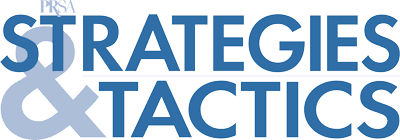3 Quick Fixes for Virtual Presentations
By Rob Biesenbach
November 2025
When the world went into COVID lockdown in March 2020, a lot of people were scrambling to get up-to-speed on how to do virtual presentations.
Since I had been doing webinars for almost a decade by that point, I put everything aside and worked to create a 30-minute video tutorial.
When it was finally ready for upload, I despaired, “This is so late! By now everybody already knows this stuff.”
It was March 25, 2020.
That’s COVID time for you — when days felt like weeks and weeks felt like months.
Now here we are, more than five years later, and virtual is a normal part of our everyday routine.
So obviously we’ve all got it nailed, right?
Well… not so much.
Sure, most people have the essentials down. I see far fewer faces obscured in the shadows, and it’s not often that I have to look straight up people’s noses anymore. Backgrounds are less distracting, cameras are better and earbuds provide decent audio.
But a few basic, but important, problems persist. Fortunately, the fixes are pretty easy. All you need is awareness and some simple visual cues (along with the ability to pay attention to them).
1. Keep it brief.
Whether we’re delivering a presentation or weighing in with a few comments in a meeting, shorter is better — especially in a virtual setting where attention spans are fragmented.
It never feels long when we’re the ones doing the speaking, so I’ve found the best way to keep track of time is to prop my phone in front of the computer and activate the stopwatch or a countdown timer.
Use it even if you’re just adding a thought or answering a question. You’ll be surprised at just how quickly time flies!
2. Get to the point.
Many of us meander, especially when we haven’t planned what we’re going to say.
To reduce the zigs and zags, grab a Post-it note, draw a line on it and label the two ends “A” and “B.” (As in, the shortest distance between two points is a straight line.)
Now stick it to the edge of the screen.
Many of us have difficulty when it comes to introducing ourselves or discussing our credentials. That’s natural — when the topic is “us,” it all feels gripping!
So, take a moment beforehand to plan what you’re going to say. Remember, it’s not a bio — it’s an intro. Keep it well under a minute.
Mind the straight line. And the clock.
3. Cut filler words.
I recently wrote about filler words, saying that years ago I actually saw someone in a meeting counting a speaker’s “ums.” Can you imagine?
Well, I can — because a few weeks ago I did it myself! But this was an especially egregious case, and for the sake of science and the mother tongue I had to document it.
This presenter used the words “uh” or “um” an average of 10 times per minute. (For my fellow English majors, that’s one every 6 seconds!)
As I’ve said, I’ve got zero issue with occasional filler words. I’m not an absolutist, and I don’t have a hard-and-fast number we should limit ourselves to. But 10 per minute is at least 8 or 9 too many.
It’s especially noticeable in the virtual environment where so many people are in listening mode and multitasking. When they’re not watching us, they’re not getting the whole picture, as it were. Without the facial expression and body language, the audio is magnified in importance.
So, review a recording of one of your meetings and just listen. What are your go-to filler words? How frequently do they come up?
Start with the most common one. Write it down on a Post-it, circle it, draw a slash through it and stick it to the screen.
Now if you suffer from all three of these problems, then you’re going to have a hard time keeping track of everything. Try focusing on one at a time until you’ve got them all nailed down.
The good news is, once you’ve internalized these fixes, your in-person presentations should improve as well.



